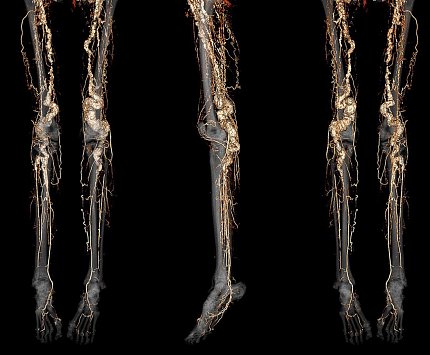Drug Shows Promise for Slowing Progression of Rare Genetic Disease

Photo: NHLBI
A drug used to treat certain bone diseases shows promise for slowing the progression of a rare, painful genetic condition that causes excessive calcium buildup in the arteries, known as arterial calcification due to deficiency of CD73 (ACDC). The results are from a first-in-human clinical trial supported by NHLBI. The study, published in Vascular Medicine, could lead to the first effective treatment for the rare disease.
ACDC, which has no known cure, often targets the arteries of the legs and can make walking painful and difficult. It can also affect the joints of the hands, causing pain and deformities. In severe cases, the condition can lead to potential limb loss. Symptoms often begin in the late teens and 20s. An extremely rare disease, it is believed to affect only about 20 people worldwide.
In the study, NHLBI researchers evaluated the safety and effectiveness of an existing drug, etidronate, in treating calcification of the arteries and impaired blood flow in the legs of seven people (four women and three men) with ACDC. Although few, they collectively represent about one-third of all the known cases in the world.
Treatment consisted of taking the oral drug daily for two weeks, every three months, over a three-year period. Researchers measured calcium deposits using CT scans and tested blood flow using the ankle brachial index, a non-invasive tool, at the start of the study and at annual follow-ups.
The treatments appeared safe, with no adverse side effects reported. The drug appeared to slow the progression of new calcium deposits in the blood vessels of the legs and patients reported their symptoms, such as pain and motion impairment, improved. However, the drug did not reverse calcium deposits already present in the affected blood vessels and joints.
Lessons learned from the current study could allow development of novel therapies for ACDC as well as shed light on other diseases involving excessive calcium buildup in the arteries, including peripheral artery disease and atherosclerosis.
